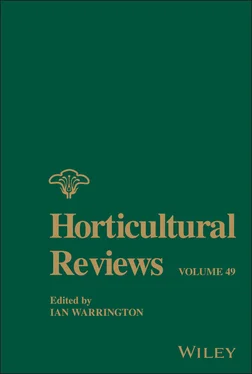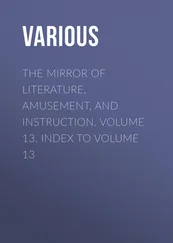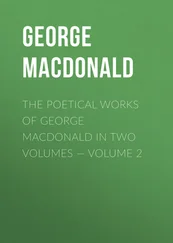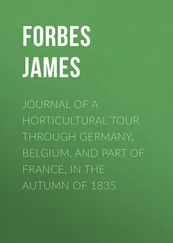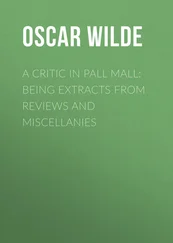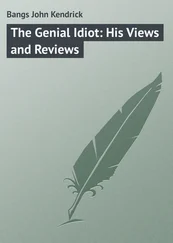Horticultural Reviews, Volume 49
Здесь есть возможность читать онлайн «Horticultural Reviews, Volume 49» — ознакомительный отрывок электронной книги совершенно бесплатно, а после прочтения отрывка купить полную версию. В некоторых случаях можно слушать аудио, скачать через торрент в формате fb2 и присутствует краткое содержание. Жанр: unrecognised, на английском языке. Описание произведения, (предисловие) а так же отзывы посетителей доступны на портале библиотеки ЛибКат.
- Название:Horticultural Reviews, Volume 49
- Автор:
- Жанр:
- Год:неизвестен
- ISBN:нет данных
- Рейтинг книги:3 / 5. Голосов: 1
-
Избранное:Добавить в избранное
- Отзывы:
-
Ваша оценка:
- 60
- 1
- 2
- 3
- 4
- 5
Horticultural Reviews, Volume 49: краткое содержание, описание и аннотация
Предлагаем к чтению аннотацию, описание, краткое содержание или предисловие (зависит от того, что написал сам автор книги «Horticultural Reviews, Volume 49»). Если вы не нашли необходимую информацию о книге — напишите в комментариях, мы постараемся отыскать её.
Hydrangea quercifolia
Horticultural Reviews, Volume 49 — читать онлайн ознакомительный отрывок
Ниже представлен текст книги, разбитый по страницам. Система сохранения места последней прочитанной страницы, позволяет с удобством читать онлайн бесплатно книгу «Horticultural Reviews, Volume 49», без необходимости каждый раз заново искать на чём Вы остановились. Поставьте закладку, и сможете в любой момент перейти на страницу, на которой закончили чтение.
Интервал:
Закладка:
Michele Buntain,Tasmanian Institute of Agriculture, University of Tasmania, Private Bag 98, Hobart 7001, Tasmania, Australia
Sergio Castro‐García,Department of Rural Engineering, University of Cordoba, Spain
Matthew D. Clark,Department of Horticultural Science, University of Minnesota, St. Paul, MN 55108, USA
Reza Ehsani,Mechanical Engineering Department, University of California Merced, Merced, CA, USA
Louise Ferguson,Department of Plant Sciences, University of California Davis, Davis, CA, USA
Stan C. Hokanson,Department of Horticultural Science, University of Minnesota, St. Paul, MN 55108, USA
Taymaz Homayouni,Mechanical Engineering Department, University of California Merced, Merced, CA, USA
Saichol Ketsa,Department of Horticulture, Kasetsart University, Chatuchak, Bangkok 10900, Thailand and Academy of Science, The Royal Society of Thailand, Dusit, Bangkok 10300, Thailand
Thomas M. Kon,Department of Horticulture. North Carolina State University, Mountain Horticultural Crops Research and Extension Center, Mills River, NC 28759, USA
James E. Larson,Department of Horticulture. North Carolina State University, Mountain Horticultural Crops Research and Extension Center, Mills River, NC 28759, USA
Anish Malladi,Department of Horticulture, University of Georgia, 1111 Miller Plant Sciences, Athens, GA 30602, USA
Andrew Sherwood,Department of Horticultural Science, University of Minnesota, St. Paul, MN 55108, USA
Arash Toudeshki,Mechanical Engineering Department, University of California Merced, Merced, CA, USA
Ian Warrington,Massey University, Palmerston North, New Zealand
Apinya Wisutiamonkul,Expert Centre of Innovative Agriculture, Thailand Institute of Scientific and Technological Research (TISTR), Khlong Luang, Pathum Thani 12120, Thailand

Dedication: Dr. Christopher B. Watkins
Dr. Christopher Brian (Chris) Watkins has had a long and distinguished career in horticultural science, particularly in postharvest physiology.
Chris was born in Palmerston North, but grew up in Auckland, New Zealand. He completed his BSc and MSc (1st Class Hons) at The University of Auckland and it was during those studies that he developed a strong interest in the plant sciences, initially in ecophysiology, investigating salt tolerance of a New Zealand native plant, Climbing New Zealand Spinach. While completing his MSc, he began his career in the Department of Scientific and Industrial Research (DSIR) in New Zealand, in the postharvest group of the Division of Horticulture and Processing at Mt. Albert, Auckland, which then became part of HortResearch (now The New Zealand Institute of Plant and Food Research). He was awarded a prestigious New Zealand National Research Advisory Council Fellowship to undertake a PhD at Rutgers – The State University of New Jersey, USA, where his research there focused on the role of mannose in the mediation of ripening in pears.
Chris’ research in DSIR/HortResearch was directed primarily at the control of bitter pit, a devastating disorder of key New Zealand cultivars at that time. He also investigated maturity processes of new apple cultivars, as well as the development of alternatives to the chemical diphenylamine (DPA) for control of superficial scald. Chris moved to the USA in 1994 as Associate Professor and progressed to become the Herman M. Cohn Professor in the Horticulture Section of the School of Integrative Plant Sciences, College of Agriculture and Life Sciences (CALS) at Cornell University, Ithaca. He is currently also the Director of Cornell Cooperative Extension, an extension system that extends throughout New York State. In addition, he is Associate Dean for the College of Agriculture and Life Sciences, and College of Human Ecology.
Dr. Watkins’ research at Cornell has focussed primarily on the storage and ripening of fruit from both applied and fundamental aspects. He is also responsible for developing and conducting the harvest maturity management, postharvest handling, and storage technology components of a multidisciplinary state‐wide fruit extension program. In doing so, he works in cooperation with extension faculty in various departments, with regional fruit specialists, extension educators, storage operators, and marketers. This balance of research, extension, and administrative roles clearly demonstrates Dr. Watkins’ remarkable ability to remain highly productive, deeply committed, and effective in all fields – an impressive achievement.
A primary area of that research has been the development of knowledge required for the use of 1‐methylcyclopropene (1‐MCP), an ethylene‐binding inhibitor that extends the storage life of apples. This work has been extended to the use of preharvest 1‐MCP and other plant growth regulator applications. He also conducts research on new cultivars of importance to New York growers, and on the effects of postharvest techniques on the nutritional quality of fruit. In addition, his research has enhanced the understanding of the underlying mechanisms in fruit responses to storage conditions such as temperature, atmosphere, and 1‐MCP, and the interactions of those factors with the development of storage disorders. His current projects focus on the development of physiological disorders of apples, such as flesh browning as affected by low temperature and gas composition in the storage environment.
Colleague and department member, Prof. William B. Miller, observes “What is most impressive is the diversity of collaborators and fields of science that Chris has touched. From orchard management techniques to genomics to metabolomics, he has been involved with them all. Without doubt, the single most important area of work in the past 15–20 years has been the development of 1‐MCP as a component of an integrated system for postharvest storage of apples. But not just a recipe for storage operators, this work (involving myriad collaborators) probed into the most fundamental molecular aspects of the mechanism of 1‐MCP so that we emerge with a set of practical tools and deeper insight into mechanism.”
Although much of his research has focused on apples, Chris has also worked on a range of other fruits and vegetables including pear, peach, strawberry, walnut, papaya, tomato, capsicum, and others.
Professor Umezuruike Linus Opara, Stellenbosch University in South Africa states: “His remarkable contributions to key scientific publications in horticultural science and his leadership in scientific publishing have made Prof. Watkins one of the most easily recognised names in our field in Africa, and indeed globally.”
Professor Pietro Tonutti (Institute of Life Sciences, Scuola Superiore Sant’Anna,
Pisa, Italy) makes the following observations: “The contributions of Prof. Watkins to scientific advancements in horticultural science is outstanding considering, in particular, the specific areas and topics of his research activity. There is no doubt that the main improvements in developing and optimizing storage technologies of apples are the results of the scientific activity and output of Prof. Watkins, world‐wide renowned as one of the major specialists and leading experts of apple fruit postharvest. He is extremely well known within the horticultural science/postharvest technology community and his reputation as an outstanding scientist is demonstrated by the number of invitations to participate in international symposia and conferences. His integrated, up‐to‐date, and always evolving approach with scientific issues is an extraordinary example for young researchers in the field of postharvest horticulture.”
Читать дальшеИнтервал:
Закладка:
Похожие книги на «Horticultural Reviews, Volume 49»
Представляем Вашему вниманию похожие книги на «Horticultural Reviews, Volume 49» списком для выбора. Мы отобрали схожую по названию и смыслу литературу в надежде предоставить читателям больше вариантов отыскать новые, интересные, ещё непрочитанные произведения.
Обсуждение, отзывы о книге «Horticultural Reviews, Volume 49» и просто собственные мнения читателей. Оставьте ваши комментарии, напишите, что Вы думаете о произведении, его смысле или главных героях. Укажите что конкретно понравилось, а что нет, и почему Вы так считаете.
